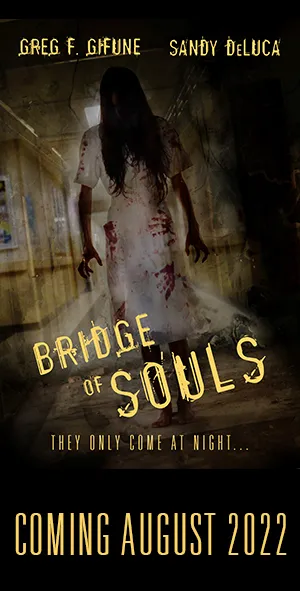Rabid Dogs is, quite simply, a substantive, inquisitive vehicular rendition of Wes Craven’s The Last House on the Left, replete with the American film’s unrepentant, carnal viciousness. However, Mario Bava’s work is much more convincingly drawn, photographed, told, and especially acted as it serves as one of the greatest examples of cinematic minimalism as the greatest portion of its tale takes place within the confines of a car. In short, though not filmed or portrayed in his signature style, Rabid Dogs stands as one of the director’s greatest efforts amid a canon of already impressive features.
During a normal Friday morning in late summer, Riccardo (Riccardo Cucciolla), Maria (Lea Lander), and ailing child Agostino (uncredited) are kidnapped after the robbery of a pharmaceutical company’s weekly payroll by four criminals goes awry. Riccardo is instructed to merely drive as the hostages’ fates hang in the balance.
Rarely is Bava mentioned for his realism, no less his hyperrealism, yet he achieves such to such a masterful degree with Rabid Dogs that, given the subject matter, many might well wish he hadn’t. Not only do the nuances of the circumstance involved flesh out the proceedings to such a disconcerting extent in the form of tolls, an accident due to either Riccardo’s ingeniousness or nervousness, arbitrary quibbles without the outlaw faction, fuel deficiencies, an inconvenient bump in the road akin to the one witnessed in Quentin Tarantino’s Pulp Fiction, and the like, but the psychological profiles of the various characters ring so authentically, plausibly true that only the visceral summer humidity, compounded by the already claustrophobic conditions within the car (which succeeds in evoking a feeling of clammy discontent in the viewer), precedes the events onscreen.
However, unlike Wes Craven’s nihilistic and absolute vision of humanity, Bava’s depiction of reality is told in such a manner that the viewer need not labor through it. Tension is created early and sustained throughout as the director rises to the challenge of examining degrees of morality as he had done countless times before. Whereas many directors would cast their hostages as vestal, hapless victims and their criminals as remorseless Sadians, we become fascinated, especially after Bava offers the convoluted notion that, unlike most of cinema, there exists a wide margin of gray area between Good and Evil. For example, the leader of the criminals, the Doctor (Maurice Poli), will only tolerate so much malevolence from his cohorts and readily views his hostages as mere pragmatic means to an end and nothing more. Conversely, Riccardo peers apathetically into the rearview mirror at his female counterpart throughout much of the feature. It is this ambivalence toward Maria (as Riccardo, bewilderingly, demands that the welfare of the child be nonetheless observed at all times lest he careen off the road) and her subsequent torture at the hands of the uncouth Thritytwo (sic) (George Eastman) and Bisturi (Don Backy, a young Sylvester Stallone) that Bava continues to mesmerize us before, amazingly and convincingly, unveiling a little seen, heartfelt side of one of the criminals. It is with this, the portrayal of humane psychopaths and indifferent victims, that Bava keeps us enthralled until the film’s revelatory close.
The filmmaker maintains the narrative’s pace fairly well throughout in lieu of his self-prescribed Hitchcockian limitations, as he permits, rather ingeniously, the tale to lag toward its close in order for his trademark plot twist to become what we remember with the greatest amount of admiration despite the psychological girth and moral ruminations contained within. Though many of his works incorporate such a plot devise, it is with Rabid Dogs that the technique not only resolves many of the questions hereto left unanswered but, in so doing, personally posits the obligation in its viewer to retrospectively evaluate the consequences of everything which came before as the semi-ambiguous motive for the initial crime becomes satirically ironic, yet coyly satisfactory, from a scathingly critical sociological perspective.
Some state that Rabid Dogs serves as a microcosm of the Mario Bava’s Hobbesian worldview of bleak maliciousness, which is permitted to run its unrepentant course before culminating in undifferentiated death. Regardless if such a reading is true, the Italian master succeeds in taking extremely volatile and easily exploitative materials and fashions them into a work which probes the notions of cruelty, morality, and the human condition like few before or since.
Conversation piece: The producer declared bankruptcy and closed the production in its final stages when, ironically, one of the film’s financiers died in an automobile accident. As a result, the work print of Rabid Dogs was seized and impounded and would not be released for post-production for over twenty years.
-Egregious Gurnow
- Interview with J.R. Bookwalter - January 22, 2015
- Interview with Andrew J. Rausch - January 22, 2015
- Interview with Rick Popko and Dan West - January 22, 2015
- Interview with Director Stevan Mena (Malevolence) - January 22, 2015
- Interview with Screenwriter Jeffery Reddick (Day of the Dead 2007) - January 22, 2015
- Teleconference interview with Mick Garris (Masters of Horror) - January 22, 2015
- A Day at the Morgue with Corri English (Unrest) - January 22, 2015
- Interview with Writer/Director Nacho Cerda (The Abandoned, Aftermath) - January 22, 2015
- Interview with Actress Thora Birch (Dark Corners, The Hole, American Beauty) - January 22, 2015
- Interview with Actor Jason Behr, Plus Skinwalkers Press Coverage - January 22, 2015


